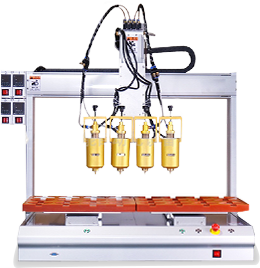

Industrial metal housing stamping parts are made of high-quality metal sheets as the basic raw materials. With the help of large presses and high-precision molds, the sheets are plastically deformed or separated through the stamping process to form industrial metal housing parts. Common materials include high-strength carbon steel, stainless steel, aluminum alloy, copper alloy, etc., which can be flexibly selected according to the special needs of different industrial environments.
Features | Detailed description |
High protection performance | The high-strength metal material and compact structure design can resist mechanical impact, dust, and liquid erosion, and meet the protection level requirements of IP65 and above. |
Precise adaptability | Based on high-precision molds and advanced stamping technology, the dimensional tolerance is controlled within ±0.1mm to ensure a perfect match with the internal components of the equipment. |
Efficient heat dissipation | For materials with good thermal conductivity such as aluminum alloy, heat dissipation holes, heat dissipation fins and other structures can be stamped to quickly drain the heat of equipment operation. |
Customized design | Supports customization of the shape, size, opening position and special function modules of the shell according to customer needs to meet the personalized needs of different industrial scenarios. |
Large-scale production | The automated stamping production line greatly improves production efficiency, with a daily production capacity of thousands of pieces, effectively reducing unit production costs. |
Various surface treatments | Provides a variety of surface treatment processes such as spraying, electroplating, anodizing, etc. to enhance the corrosion resistance and aesthetics of the shell. |
3. Product Details
Material Selection
High-strength carbon steel: has excellent mechanical strength and rigidity, suitable for protective shells of heavy industrial equipment and engineering machinery, and can withstand large external impacts.
Stainless steel: with excellent corrosion resistance and oxidation resistance, it is often used in food processing, chemical industry, medical and other industrial fields with strict requirements on hygiene conditions.
Aluminum alloy: with its light weight, good thermal conductivity and easy processing, it has become the preferred material for heat dissipation shells of electronic equipment and new energy equipment.
Copper alloy: due to its good electrical and thermal conductivity, it is often used in industrial electronic equipment shells with special requirements for electromagnetic shielding and signal transmission.
Processing Technology
Punching: Use molds to accurately cut metal sheets to form the basic outline and shape of the shell.
Bending: Use bending machines and molds to bend the sheet at multiple angles to shape the three-dimensional structure of the shell.
Stretching: Stretch the flat sheet into a shell with a certain depth, which is suitable for the forming of complex-shaped shells.
Punching and trimming: Process various holes such as mounting holes and heat dissipation holes on the shell, and trim the edges to ensure dimensional accuracy and surface quality.
Surface treatment
Powder coating: The powder coating is evenly attached to the surface of the shell through electrostatic adsorption, and a colorful, wear-resistant and corrosion-resistant coating is formed after high-temperature curing.
Electroplating: Such as zinc plating, nickel plating, etc., to improve the rust resistance and aesthetics of the shell surface, suitable for outdoor industrial equipment.
Anodizing: For aluminum alloy shells, a dense oxide film is generated to enhance hardness and weather resistance, and a variety of color effects can be achieved.
Application areas
Industrial automation equipment: Provide protective shells for robot control cabinets and PLC control cabinets to ensure stable operation of equipment.
Electrical and electrical equipment: Used for distribution cabinets and transformer shells, with good insulation and electromagnetic shielding performance.
Mechanical equipment manufacturing: As machine tool protective covers and industrial pump body shells, prevent people from accidentally touching and mechanical parts from being damaged.
New energy equipment: Applied to wind turbine nacelle shells and photovoltaic inverter shells to adapt to complex outdoor environments.
 Headquarters tel.
Headquarters tel. E-mail.
E-mail.